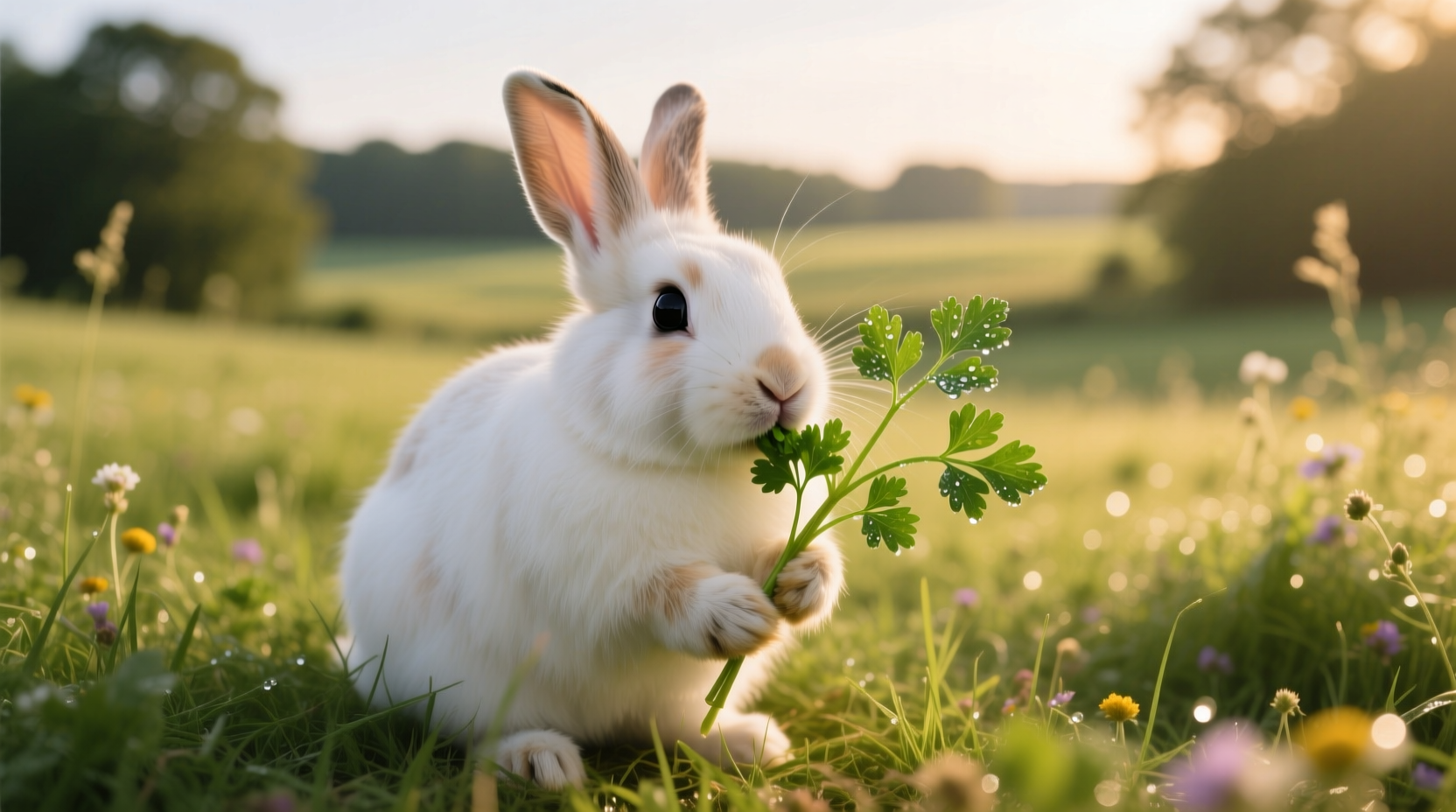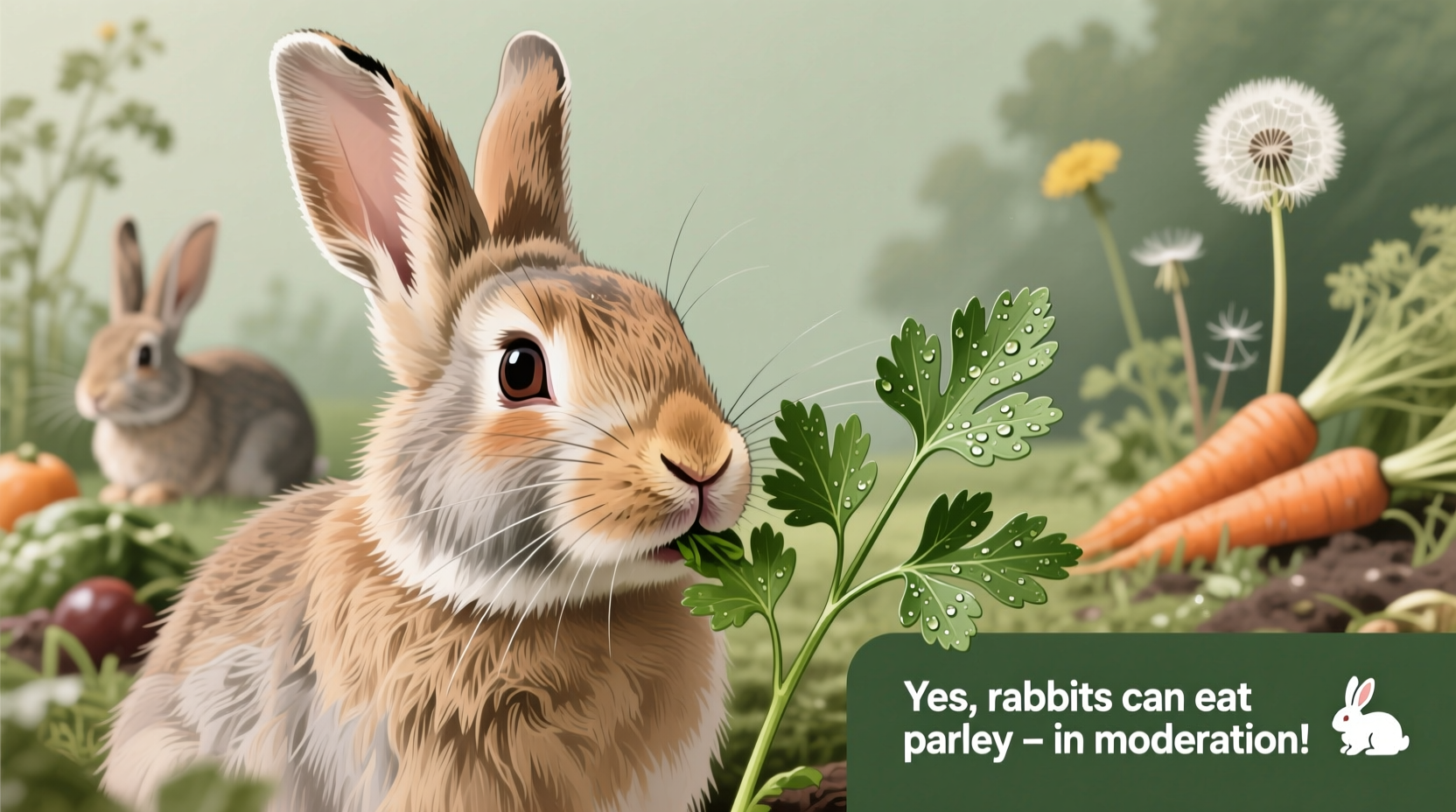As a rabbit owner, you want to provide the best nutrition for your furry companion. Parsley often appears on recommended vegetable lists, but understanding exactly how and when to feed it is crucial for your rabbit's health. Let's explore the science-backed guidelines for incorporating this common herb into your rabbit's diet.
Why Parsley Benefits Rabbit Nutrition
Parsley packs a powerful nutritional punch for rabbits when fed appropriately. This leafy green contains:
- Vitamin A for healthy vision and immune function
- Vitamin C to support overall health (rabbits produce their own but additional sources help)
- Vitamin K essential for blood clotting
- Calcium in moderate amounts for bone health
- Fiber that complements their digestive system
According to the House Rabbit Society's nutritional guidelines, leafy greens like parsley should make up about 10-15% of an adult rabbit's daily diet, with the majority being unlimited grass hay. The fiber content in parsley supports healthy gut motility, while its moisture content helps with hydration.
| Green Type | Calcium (mg/100g) | Oxalates (mg/100g) | Safe Frequency |
|---|---|---|---|
| Parsley | 138 | 130 | 2-3 times/week |
| Romaine Lettuce | 35 | 3 | Daily |
| Kale | 150 | 30 | 1-2 times/week |
| Cilantro | 67 | 5 | Daily |
This nutritional comparison shows why parsley requires more careful portion control than some other greens. While it offers excellent nutrients, its higher oxalate content means it shouldn't be fed daily like lower-oxalate options such as cilantro or romaine lettuce.
Proper Parsley Feeding Guidelines by Life Stage
Rabbits have different nutritional needs at various life stages. Here's how to safely introduce parsley:
- Baby rabbits (under 12 weeks): No parsley—their digestive systems are too delicate. Stick to mother's milk and eventually timothy hay.
- Young rabbits (3-7 months): Introduce tiny amounts (1-2 leaves) once weekly after they've adjusted to basic greens.
- Adult rabbits (7 months+): 1-2 sprigs (about 1 tablespoon chopped) 2-3 times weekly as part of a varied green rotation.
- Senior rabbits (6+ years): Same as adults, but monitor kidney function as excessive calcium may cause issues.
Always wash parsley thoroughly to remove pesticides and start with small amounts to monitor for digestive upset. Gradually increase to the recommended serving over 2-3 weeks if no issues occur.

When to Limit or Avoid Parsley
Certain health conditions require modified parsley intake:
- Bladder sludge or stones: Eliminate high-oxalate greens like parsley completely—consult your vet for a specialized diet.
- Kidney problems: Reduce all calcium-rich foods including parsley.
- Diarrhea or GI stasis: Temporarily remove all greens until digestive system stabilizes.
- Obesity: Maintain regular portions but ensure parsley doesn't displace necessary hay intake.
The American Veterinary Medical Association notes that rabbits with urinary issues often benefit from a diet lower in calcium and oxalates. If your rabbit has a history of bladder problems, substitute parsley with lower-oxalate options like cilantro or radicchio.
Preparing Parsley Safely for Your Rabbit
Proper preparation ensures your rabbit gets the maximum benefit with minimal risk:
- Choose organic parsley when possible to minimize pesticide exposure
- Wash thoroughly under running water, rubbing leaves gently
- Remove any yellowed or wilted leaves
- Chop into small, manageable pieces (about 1-inch lengths)
- Mix with other greens to create variety
- Remove uneaten portions after 2-3 hours to prevent spoilage
Both the leaves and stems are safe for rabbits, though some prefer the tender leafy parts. The stems actually contain more fiber, which benefits digestion. Never feed parsley roots (parsnips are different) or cooked parsley, as rabbits require raw vegetation for proper digestion.
Creating a Balanced Green Rotation Schedule
Variety prevents nutritional imbalances and keeps your rabbit interested in healthy foods. Here's a sample weekly rotation:
- Monday: Romaine lettuce + cilantro
- Tuesday: Endive + dandelion greens
- Wednesday: Basil + carrot tops
- Thursday: Parsley + radicchio
- Friday: Arugula + mint
- Saturday: Parsley + beet greens
- Sunday: Watercress + bok choy
This rotation ensures your rabbit receives diverse nutrients while limiting exposure to any single plant's potential drawbacks. Remember that leafy greens should complement—not replace—the unlimited grass hay that forms the foundation of a rabbit's diet.
Signs Your Rabbit Isn't Tolerating Parsley Well
Watch for these indicators that parsley may not agree with your rabbit:
- Soft stools or diarrhea within 24 hours of feeding
- Decreased appetite for hay (concerning since hay is essential)
- Reduced fecal output or abnormally small droppings
- Excessive thirst or changes in urine color/consistency
- Lethargy or decreased activity level
If you notice any of these symptoms, discontinue parsley immediately and consult your exotic veterinarian. Most rabbits tolerate parsley well when fed in appropriate portions, but individual sensitivities do occur.











 浙公网安备
33010002000092号
浙公网安备
33010002000092号 浙B2-20120091-4
浙B2-20120091-4